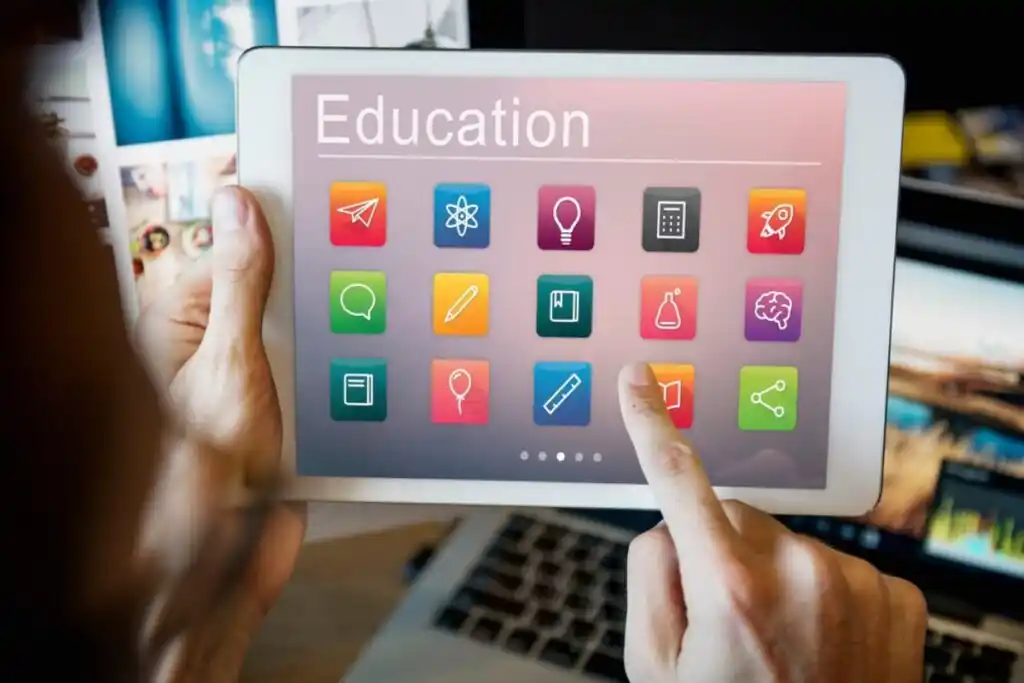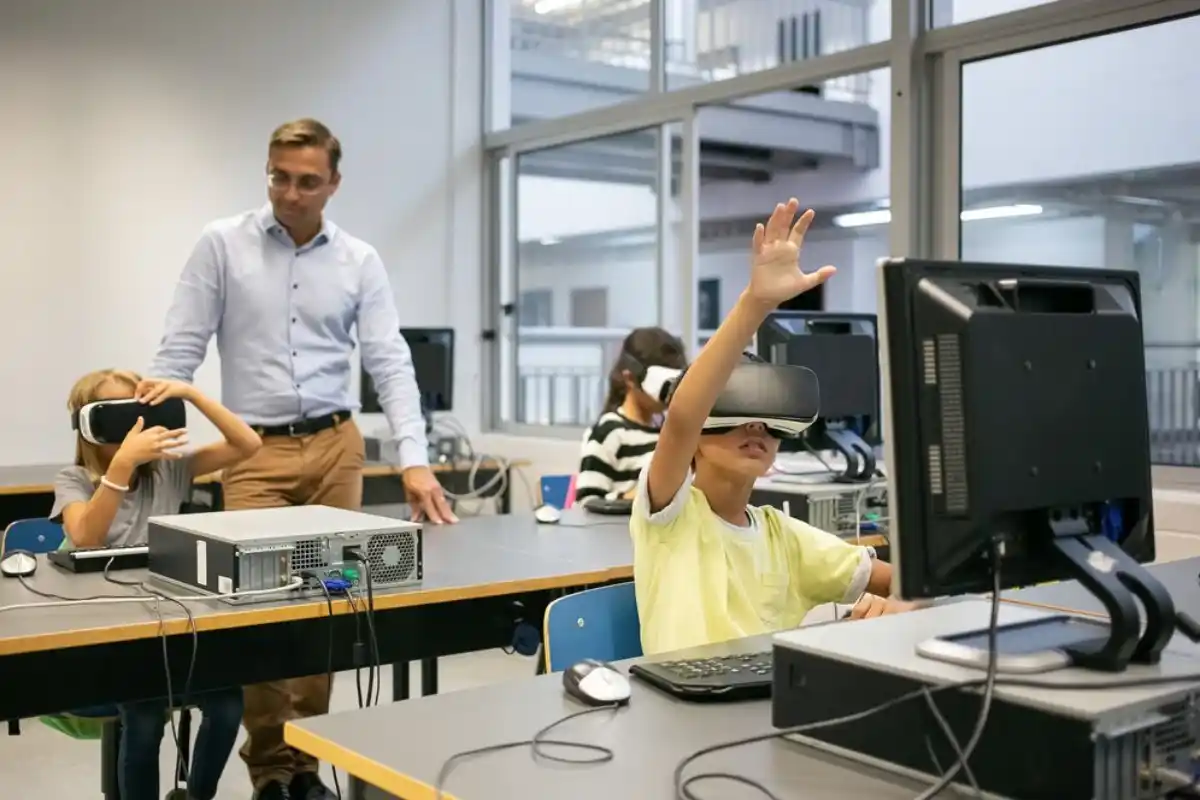The Education Blog

The Rise of AI-Powered Tutoring Platforms
The digital shift in education isn’t just a future idea; it’s happening now. Technology has changed teaching and learning. We now use online classrooms, interactive whiteboards, and virtual campus tours. At the heart of this revolution lies one of the most disruptive developments to date: AI tutoring.
Artificial intelligence uses advanced algorithms and educational psychology. This helps to provide personalised learning experiences on a large scale. AI-powered platforms go further than static revision apps or video tutorials. They adapt in real time to a learner’s strengths, weaknesses, pace, and preferences.
This article looks at the rise of AI tutoring technologies. We see how they are changing edtech solutions. We also look at how they can make education more efficient, inclusive, and engaging than before.
What Is AI Tutoring?
AI tutoring means online learning platforms that use artificial intelligence. They aim to provide the same support and feedback as a human tutor. These systems use machine learning, natural language processing (NLP), and big data. They assess performance and adjust instruction based on the results.
Unlike traditional online courses or e-learning platforms, AI tutors:
- Provide real-time feedback
- Adjust difficulty levels dynamically
- Recommend targeted resources or revision strategies
- Monitor learner engagement and offer motivational support
They are always-ready, flexible learning partners. They keep changing to fit each student’s needs.
Key Features of AI-Powered Tutoring Platforms
1. Adaptive Learning Paths
AI platforms evaluate a student’s knowledge and learning style. They then create tailored lesson plans. The content adapts to each learner’s needs. It can reinforce basics or offer advanced challenges.
2. Instant Feedback and Error Correction
AI tutors offer instant feedback, unlike human tutors who may not be available right away. This helps students grasp their mistakes as soon as they happen. This promotes faster learning cycles and greater retention.

3. Natural Language Interactions
Thanks to NLP, many platforms can now understand and reply to typed or spoken questions in a conversational way. This bridges the gap between traditional instruction and digital convenience.
4. Data-Driven Insights
Parents, teachers, and learners can access dashboards with performance analytics. They can track progress, identify knowledge gaps, and improve strategies.
5. Gamification and Engagement Tools
Many AI systems use interactive challenges, progress badges, and rewards. These tools help keep motivation high and encourage regular study habits.
Personalised Learning: From Concept to Reality
One of the most transformative contributions of AI in education is its ability to support personalised learning—a long-standing goal that traditional classroom environments often struggle to achieve due to time constraints, class sizes, and curriculum rigidity.
With AI tutoring:
- Students progress at their own pace
- Learners revisit difficult concepts as needed
- Faster learners are not held back, while others receive more practice
- Instruction matches cognitive preferences, such as visual, auditory, or text-based learning
The result is a more inclusive, student-centred experience—one where individual differences are respected, and success is defined by mastery rather than conformity.

Leading AI Tutoring Platforms in 2025
The global edtech solutions market is growing rapidly, with AI-driven platforms at the forefront. Here are some of the leading names redefining the digital tutoring space:
1. Khanmigo (by Khan Academy)
Powered by OpenAI, Khanmigo serves as an AI guide for students and teachers. It supports Socratic questioning, personalised coaching, and real-time assistance across core subjects.
2. Socratic by Google
Designed for secondary school students, Socratic uses AI to analyse homework questions via photos or voice input and delivers concise, accessible explanations.
3. Quizlet Learn
Using modern learning algorithms, Quizlet’s Learn mode adjusts flashcard sessions based on how well students remember specific information—reinforcing weak areas through spaced repetition.
4. Century Tech
UK-based Century Tech blends neuroscience with AI to deliver intelligent intervention and ongoing diagnostic feedback, used by schools and colleges globally.
5. Carnegie Learning
Focused on maths and literacy, this platform uses AI to adapt its instructional path continuously, aiming to mirror the nuance of human tutoring.
Benefits of AI Tutoring for Learners
1. Accessibility
AI tutors can be accessed anytime, anywhere—eliminating geographical or scheduling barriers to quality education. This is especially impactful in underserved regions or during school disruptions.
2. Affordability
While private tutoring can be costly, many AI-powered platforms are low-cost or free. This democratises access to high-quality learning support.
3. Consistent Quality
Unlike human instruction, which can vary depending on the teacher’s mood, energy, or experience, AI tutoring maintains a consistent standard of delivery and patience.
4. Increased Autonomy
Learners gain confidence by taking ownership of their educational journey—deciding when, what, and how they study. AI tutors provide guidance without removing independence.
5. Customised Exam Preparation
From SATs and GCSEs to university entrance tests, AI tutors can create hyper-focused revision strategies based on real-time performance metrics and practice exam results.
Considerations and Challenges
Despite the many benefits, AI tutoring is not without limitations. Understanding its current boundaries helps educators and parents make informed choices.
1. Lack of Emotional Intelligence
AI may provide correct answers but cannot yet fully replicate the empathy, encouragement, or social cues of human tutors—important for learners who need emotional support or creative dialogue.
2. Over-Reliance on Automation
Excessive screen time or dependence on AI tools can lead to reduced critical thinking or collaboration skills. Blending AI with human guidance is essential for holistic development.
3. Data Privacy Concerns
AI platforms collect large amounts of user data to optimise learning. Ensuring this data is stored securely and used ethically is a growing concern among educators and policymakers.
4. Digital Divide
Accessing AI tutoring requires the internet and devices, but many areas still struggle with this. Bridging this gap is crucial for true equity in digital education.

AI and the Future of Teaching
AI tutors should be seen as co-educators. They complement human teachers instead of replacing them.
For Teachers:
- AI can reduce administrative workload (e.g. marking, tracking)
- Identifies students who need intervention early
- Offers insights to tailor in-class instruction
For Schools:
- Blended learning environments improve outcomes
- Supports differentiated instruction for mixed-ability classrooms
- Enables scalable, data-driven education policies
As AI tools get smarter, teacher training must change too. Educators need to learn how to use these platforms in their teaching in a meaningful and ethical way.
Tips for Parents and Students Using AI Tutoring Tools
1. Set Clear Goals
Find out what the learner wants to achieve. This could be mastering algebra, improving reading skills, or getting ready for a specific exam.
2. Use in Moderation
AI tutors are handy, but they shouldn’t fully replace human interaction or traditional study methods. Balance screen time with hands-on activities and peer discussion.
3. Choose Reputable Platforms
Make sure the tool is suitable for the age group, effective for teaching, and has good reviews from teachers or schools.
4. Monitor Progress
Track learning metrics regularly. Many platforms offer dashboards that highlight weak areas or recommend next steps.
5. Encourage Curiosity
Use AI tutoring as a springboard for deeper learning. If something catches your interest, check it out in books, videos, or talks outside the AI interface.
Reimagining Education with AI
AI tutoring isn’t just a tech breakthrough; it’s a major change in how we think about learning. AI is making personalised learning accessible, affordable, and informed by data. This helps students achieve their full potential in ways we never thought possible.
The best learning environments mix human connection with digital innovation. As edtech solutions evolve, educators, parents, and learners must consider how to use these tools wisely. They should enhance, not replace, the key relationships that make education truly transformative.
Act now: Check out a reliable AI tutoring platform, set a learning goal, and try using AI in your study routine. Because in the future of education, personalisation is not a privilege—it’s a promise.









